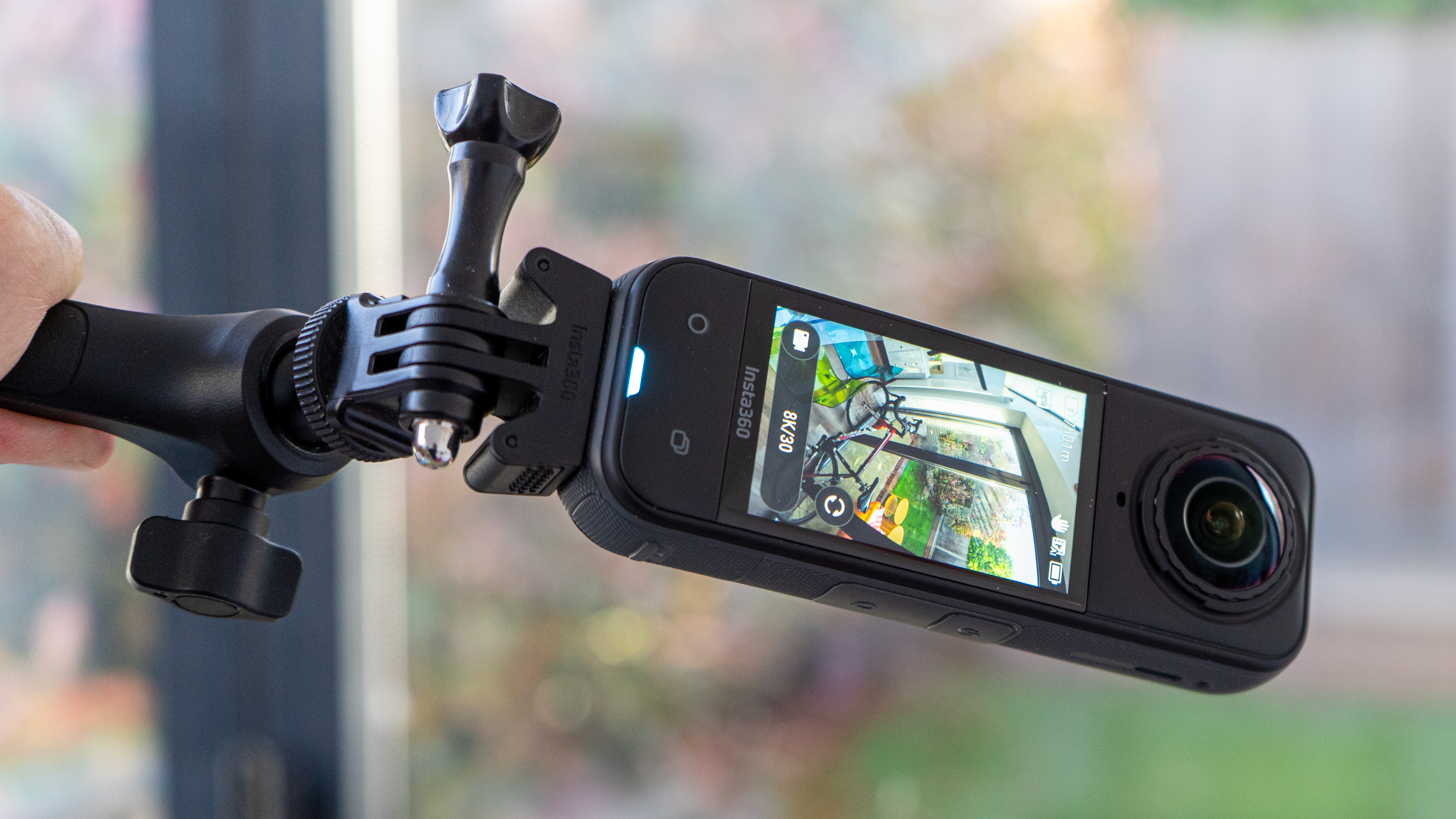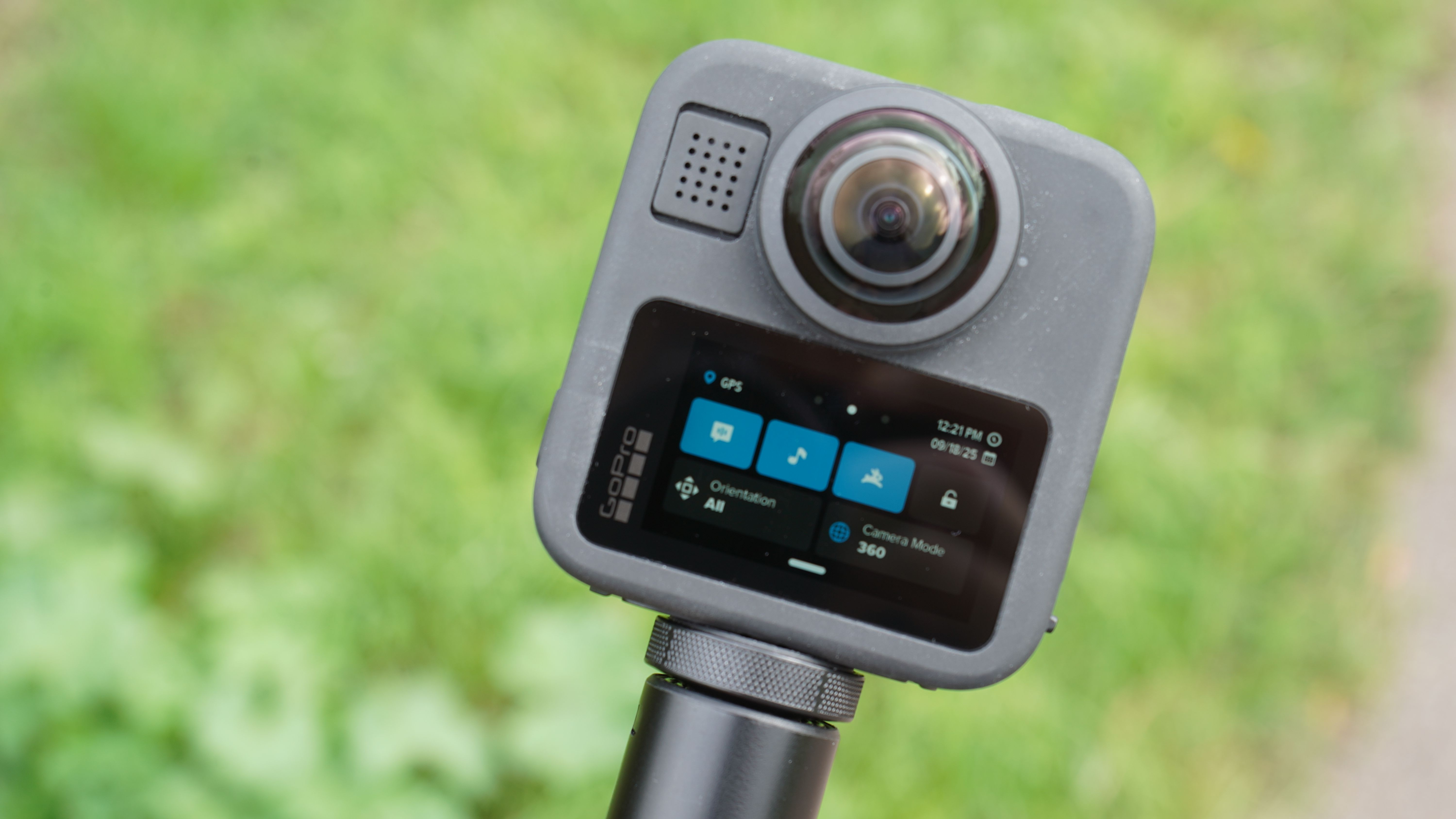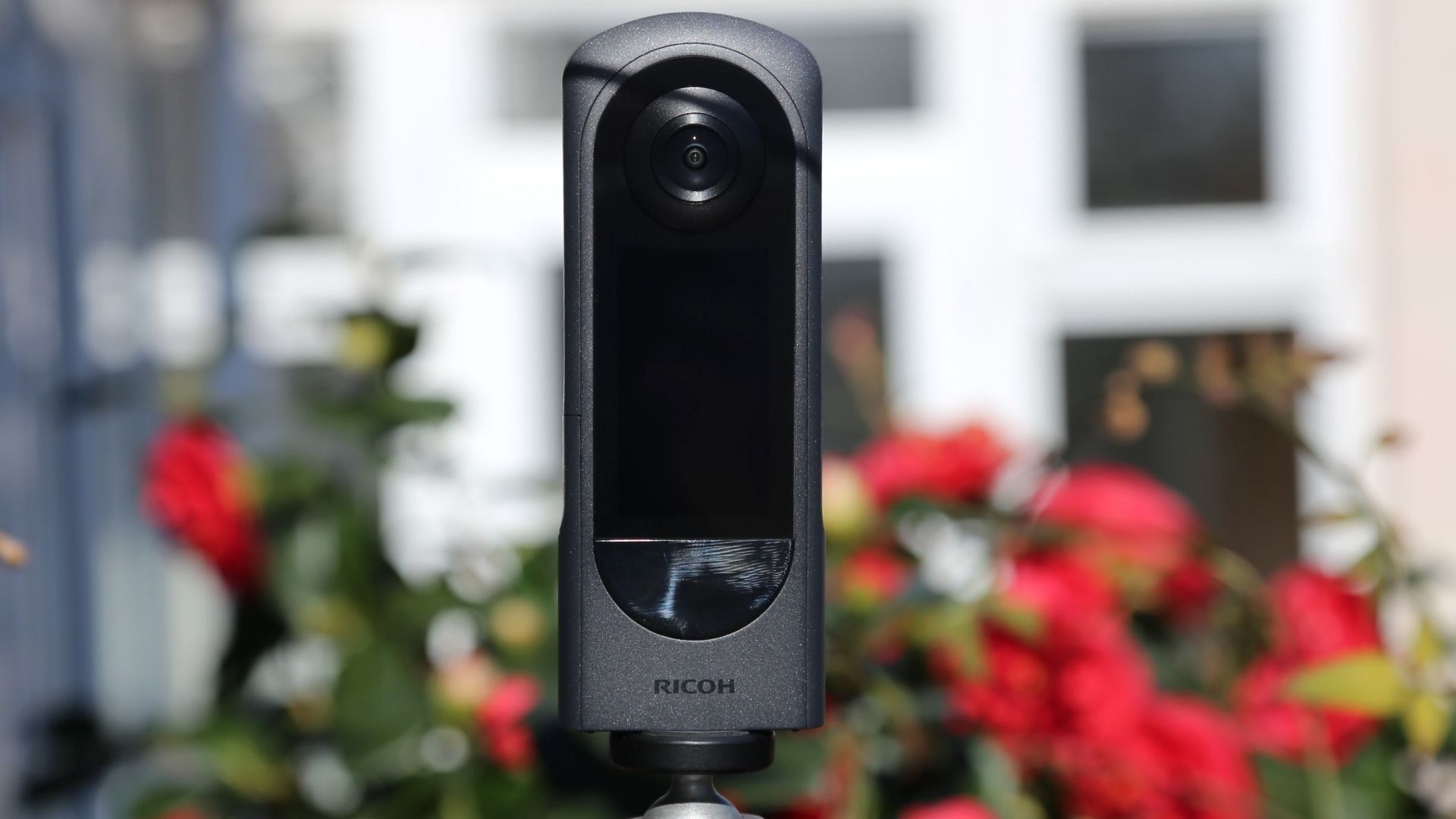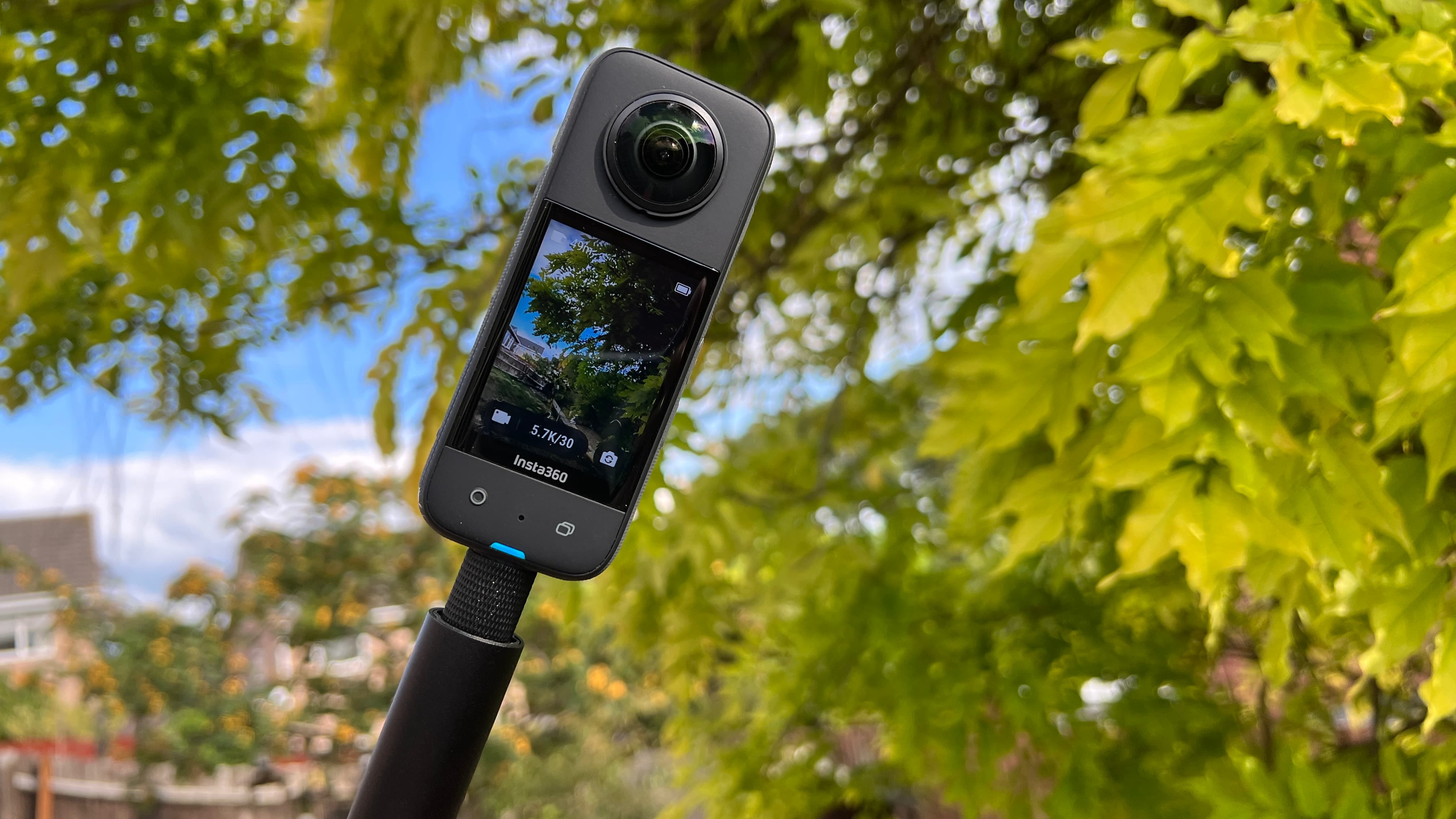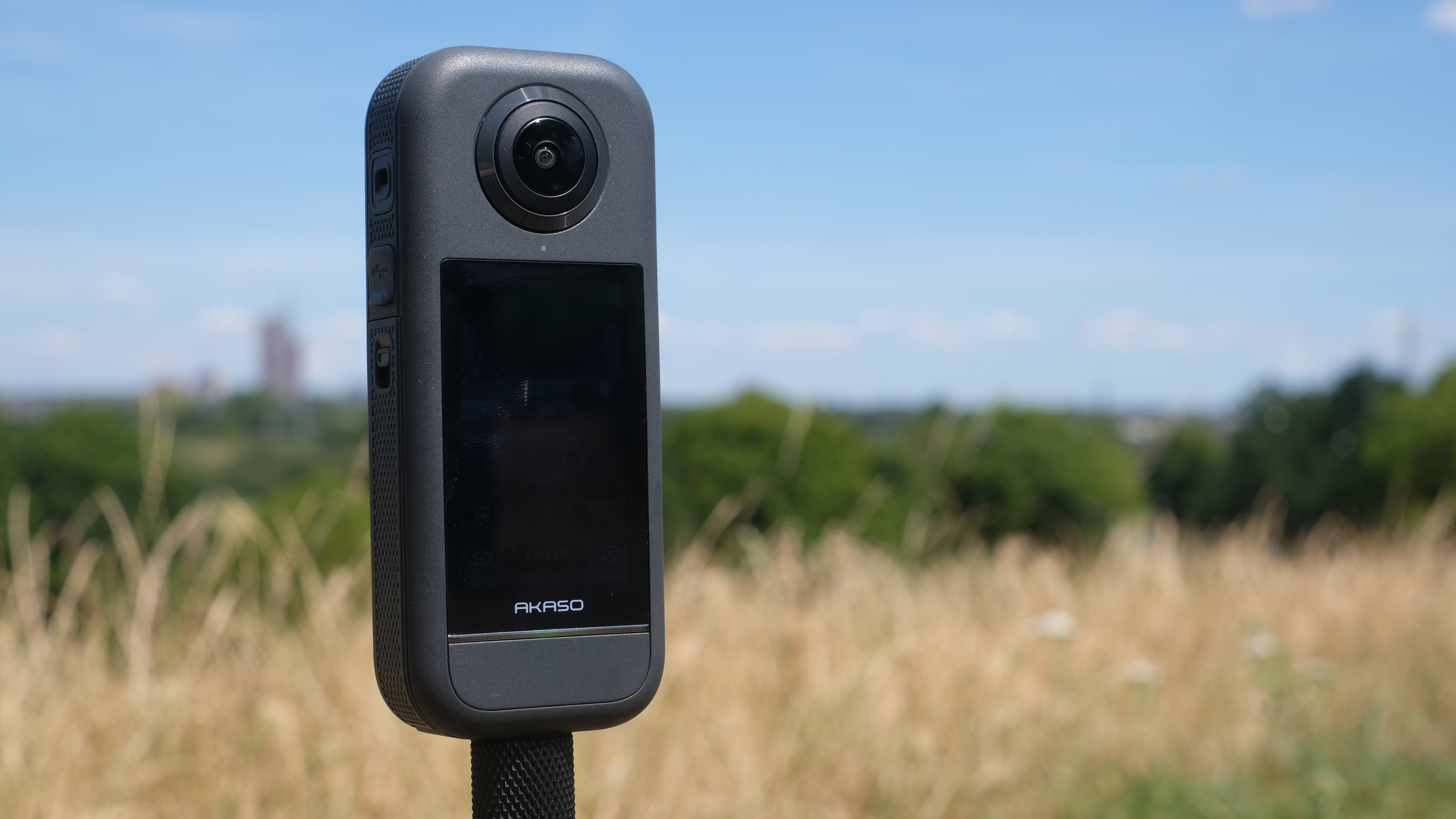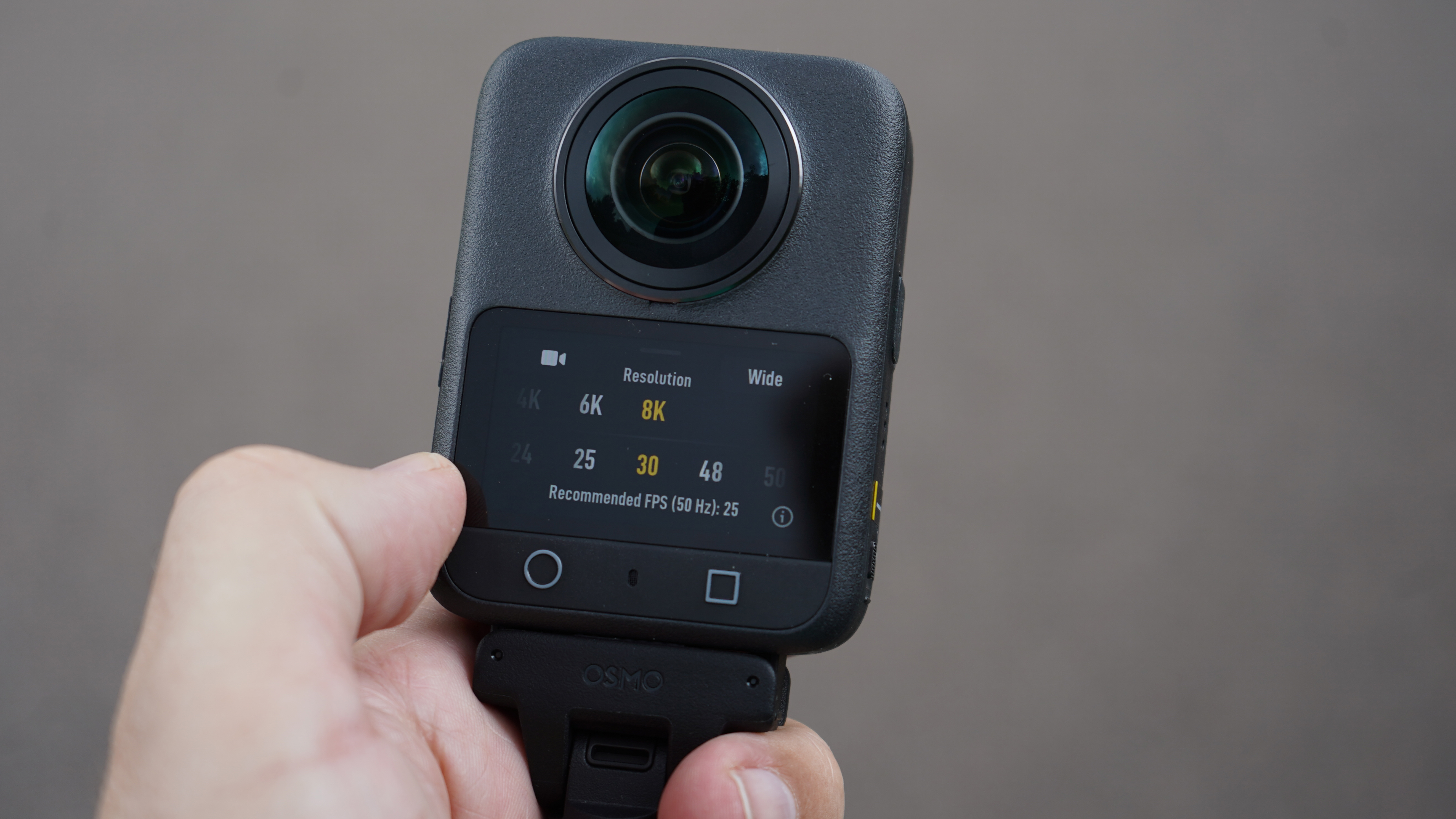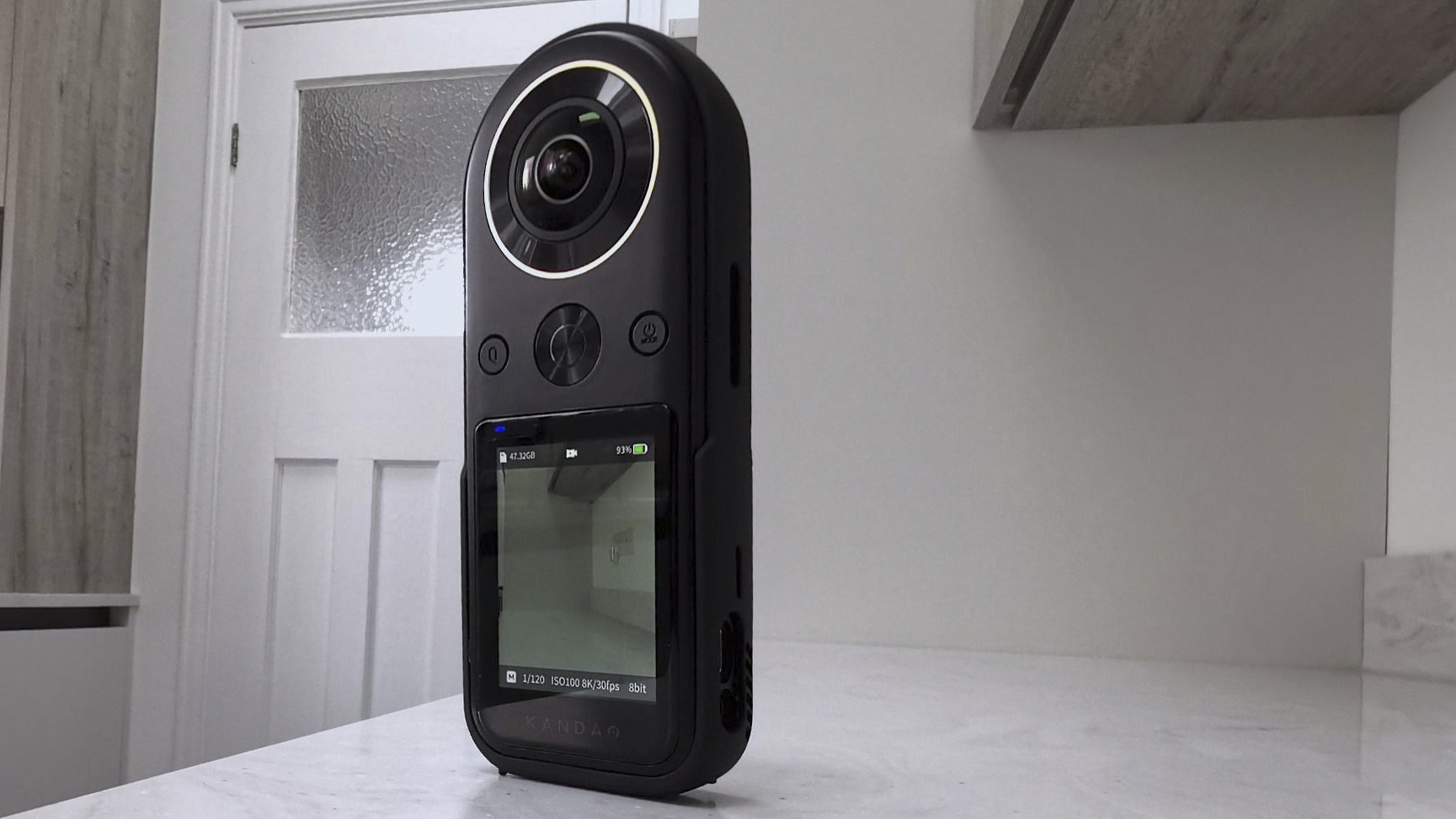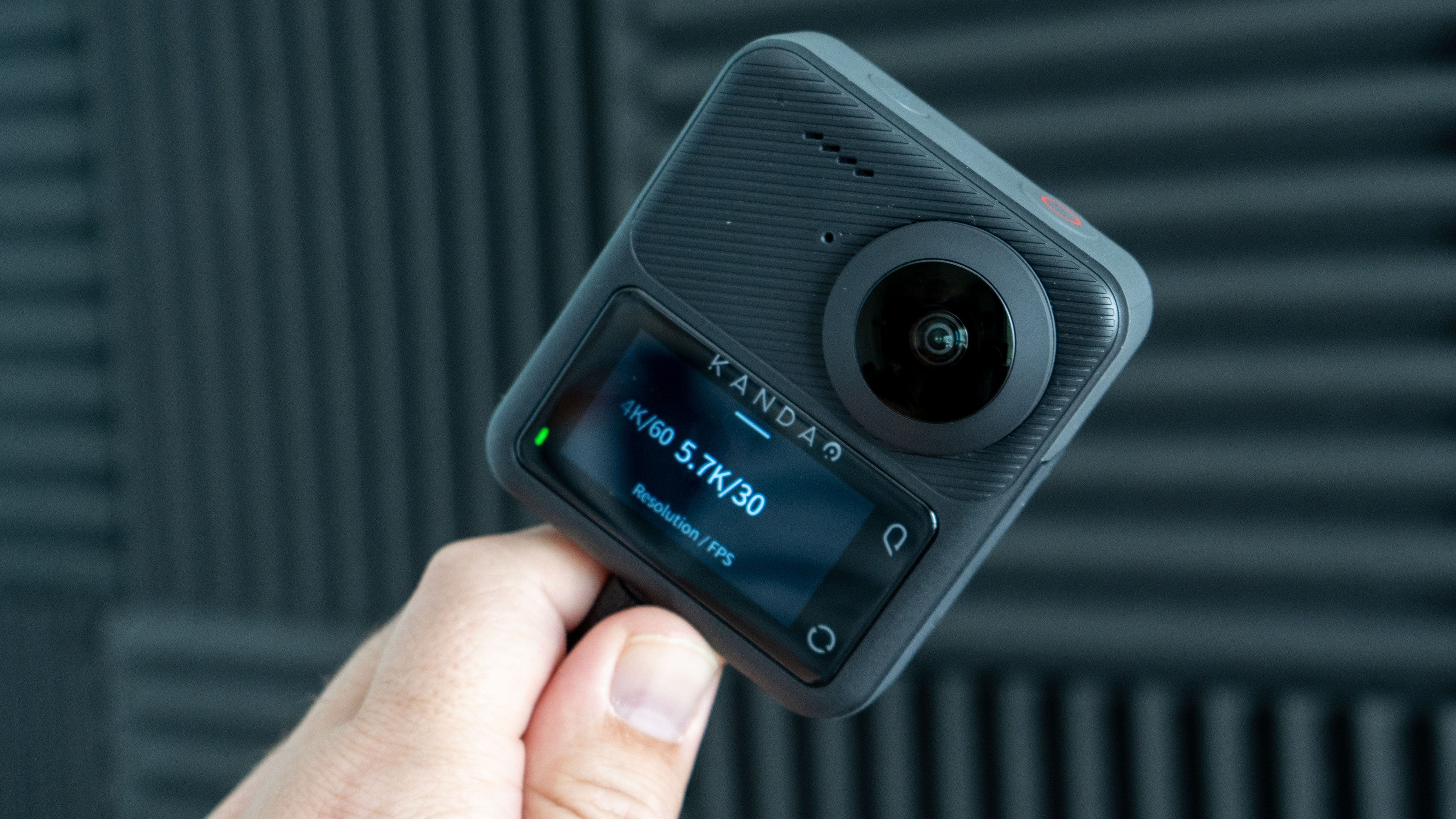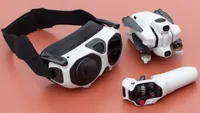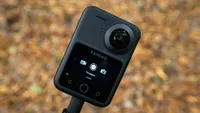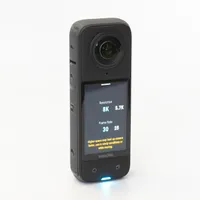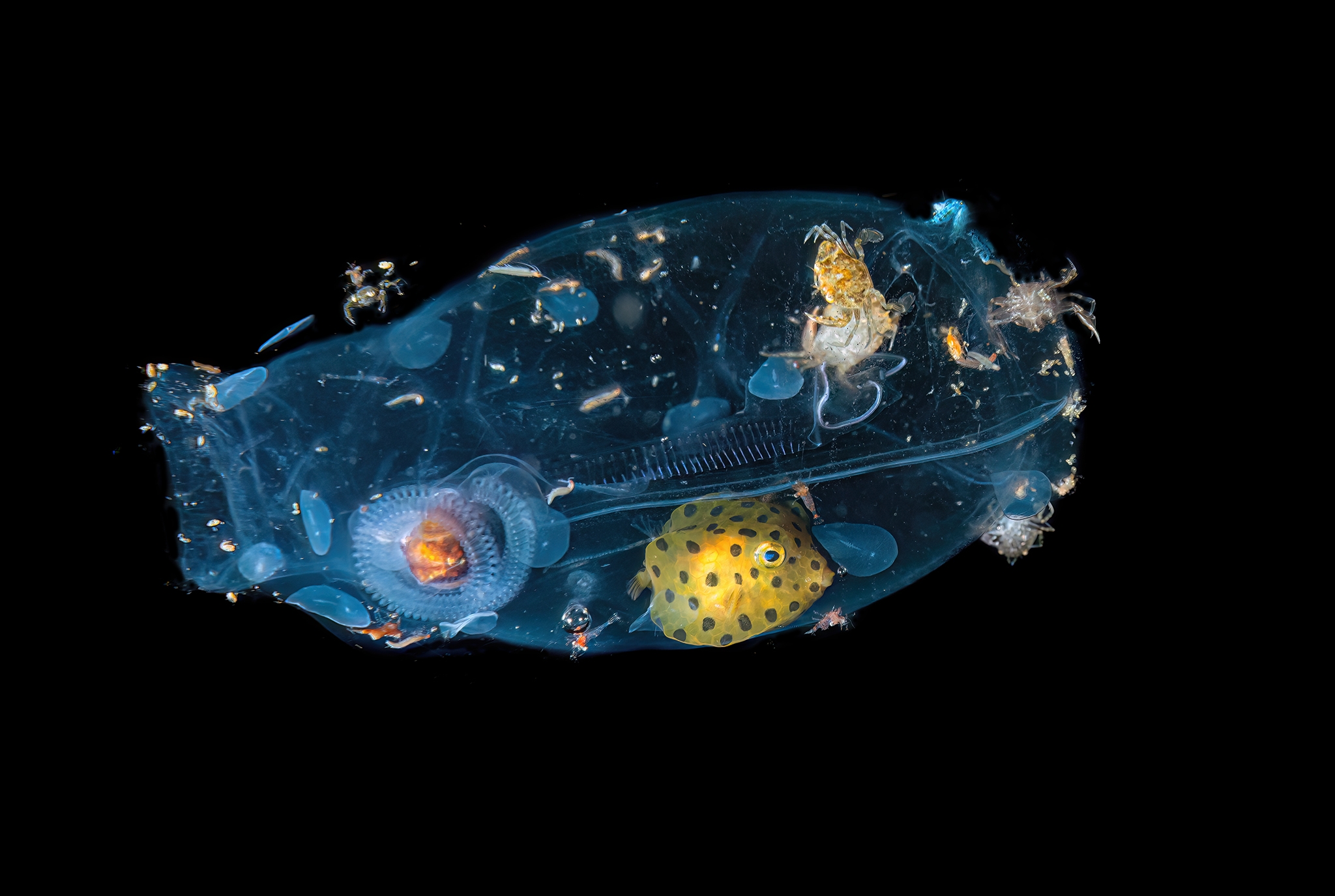The best 360 cameras in 2025: shoot panoramas, 360 video, selfies and more
The best 360 cameras have dropped massively in price, are fun to use and create amazing content for social media
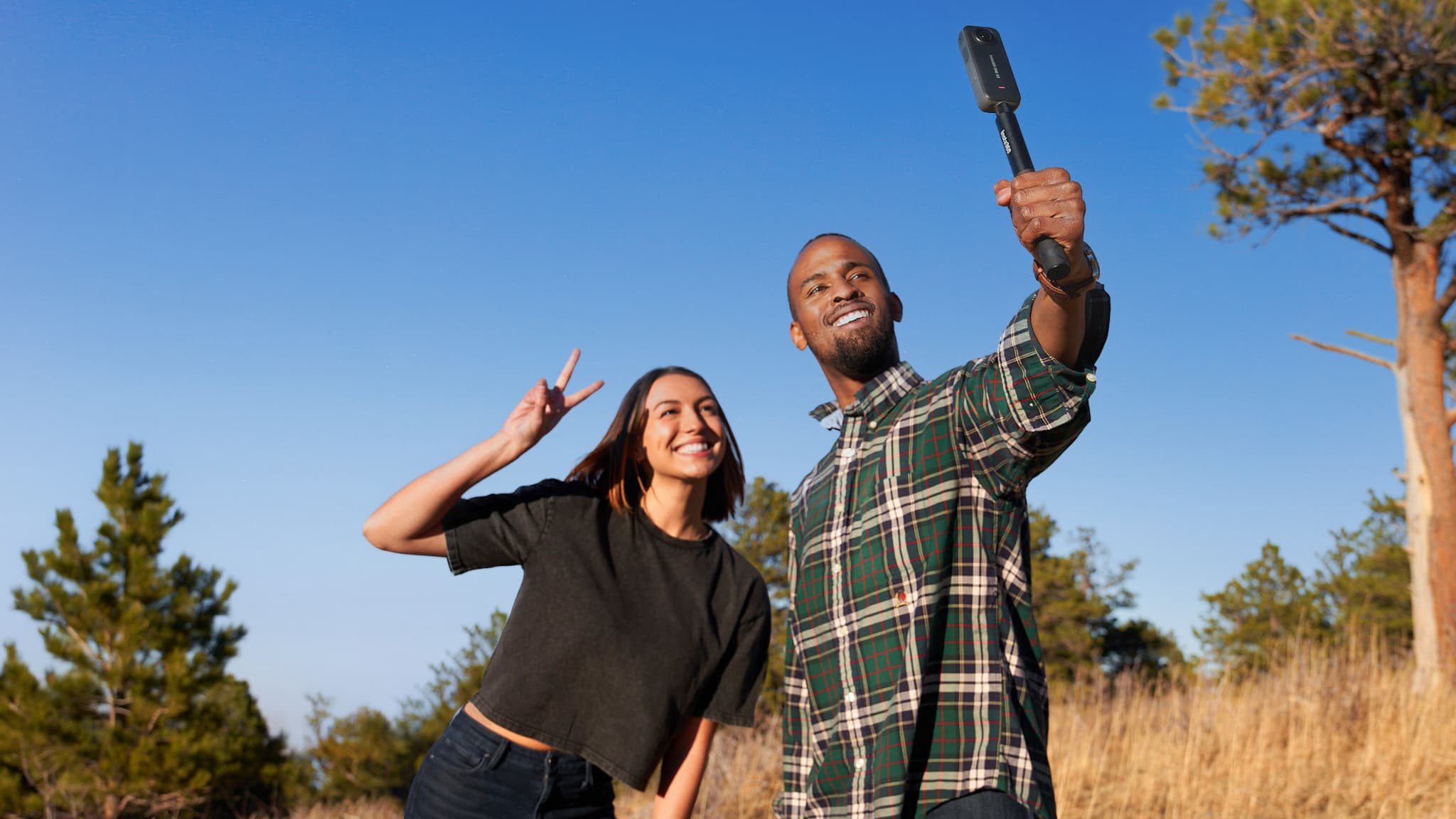
With the best 360 cameras, you can capture images and videos that are quite unlike anything else. You can capture video which can be explored edited down to "flat" 2D or explored in full by dragging on a screen or deep-diving using AR glasses. Understanding it fully can be a little technical, but you probably won't need to – the best cameras have apps which help you side-step this.
The files created by 360-degree cameras record the whole scene, so it's the camera's job to see everything and, ideally, ignore any device you use to hold the camera – hence the term 'invisible selfie stick' (but there are other ways: scroll down and you'll even find one drone with a 360 camera).
It is also why the positioning of the lenses opposite each other matters in the design, and the camera software's ability to both stitch the image from the two together and, ideally, to compensate for the camera's movement – stabilization, just like other action cameras. This is less relevant in stills, of course!
Atop that there are a lot of cool effects you can apply by changing the framing; zooming in and out beyond common sense to create 'tiny planets' and the like. This is where a good ecosystem – and good apps – put some cameras ahead of others. Keyframing is one way, but AI to track people really helps, and makes the apps quicker. As well as separate apps, plugins for leading editing programs can speed things along. Ultimately, you have tremendous versatility with a 360-degree camera; it almost doesn't matter where you point it.
If you're feeling lost, don't worry – jump to our section on how 360 imaging works, which will get your head around the basics. Thankfully, though, several of the cameras have helped out here a lot too, as you'll see. The cost of entry is a lot less than you might expect, too. And on that note, let's dive in and count off the best 360 cameras you can buy right now.
UPDATE: This list was arranged in acknowledgement of the difficulties in accessing the impressive new DJI Osmo 360 – but at least the amazing new GoPro Max 2 is available.
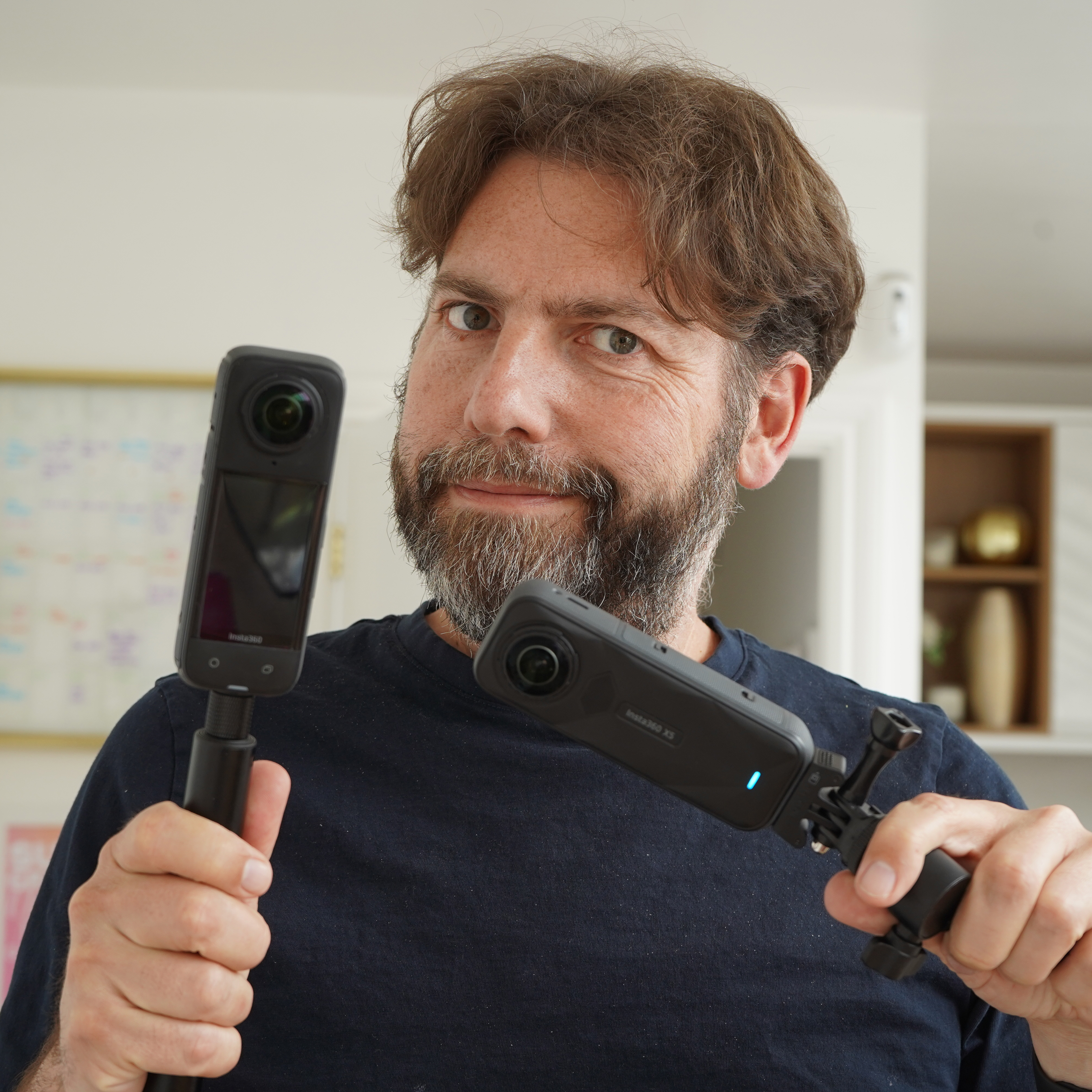
Adam has been obsessed with looking at cameras and gadgets for his whole life, and has written several bestselling books including The Drone Pilot's Handbook (he is our resident drone expert too). He owns and travels with a 360-degree camera, and tests as many as he can get his hands on.
The Quick List
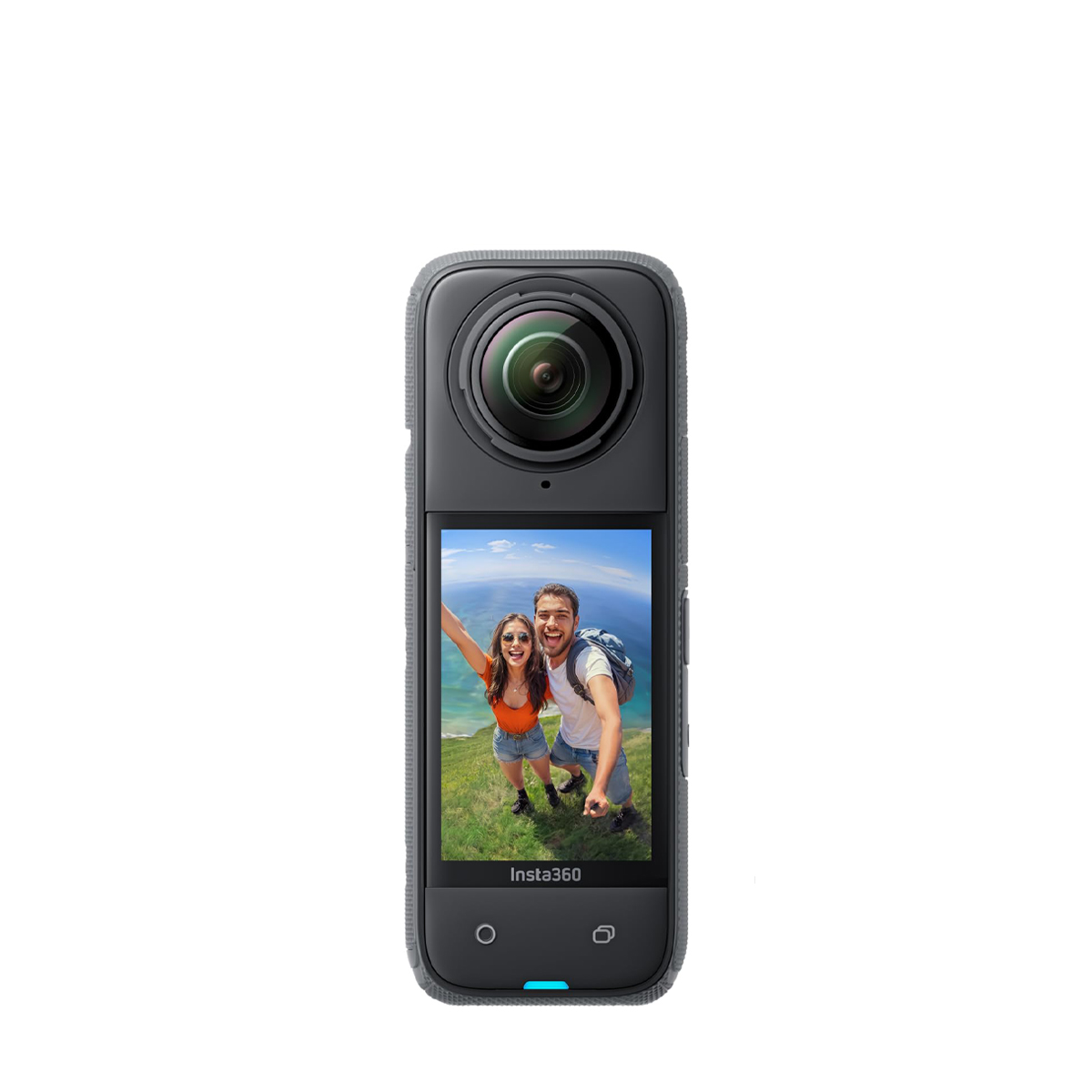
The Insta360 'X' series has been refined over several generations, and now it is sharp with 8K resolution, has great low light performance, and – crucially – is easy to use with excellent software for quick fun or serious creators.
Read more below...
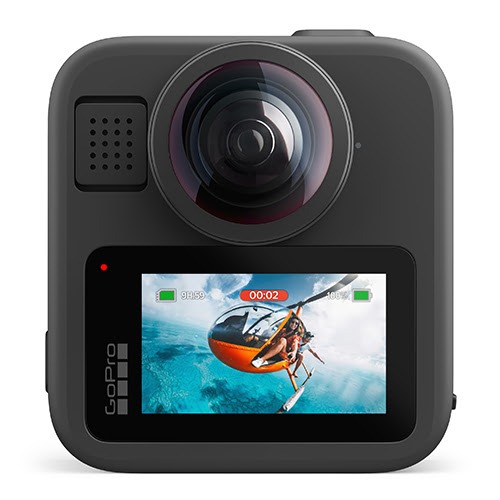
Six years after the first GoPro Max, the new model is a massive improvement, featuring 8K resolution, back-to-back lenses for better stitching, and a clever 6-microphone sound system. Cunning rugged design with easily replaced lenses, GoPro has jumped back up the list with this camera.
Read more below...
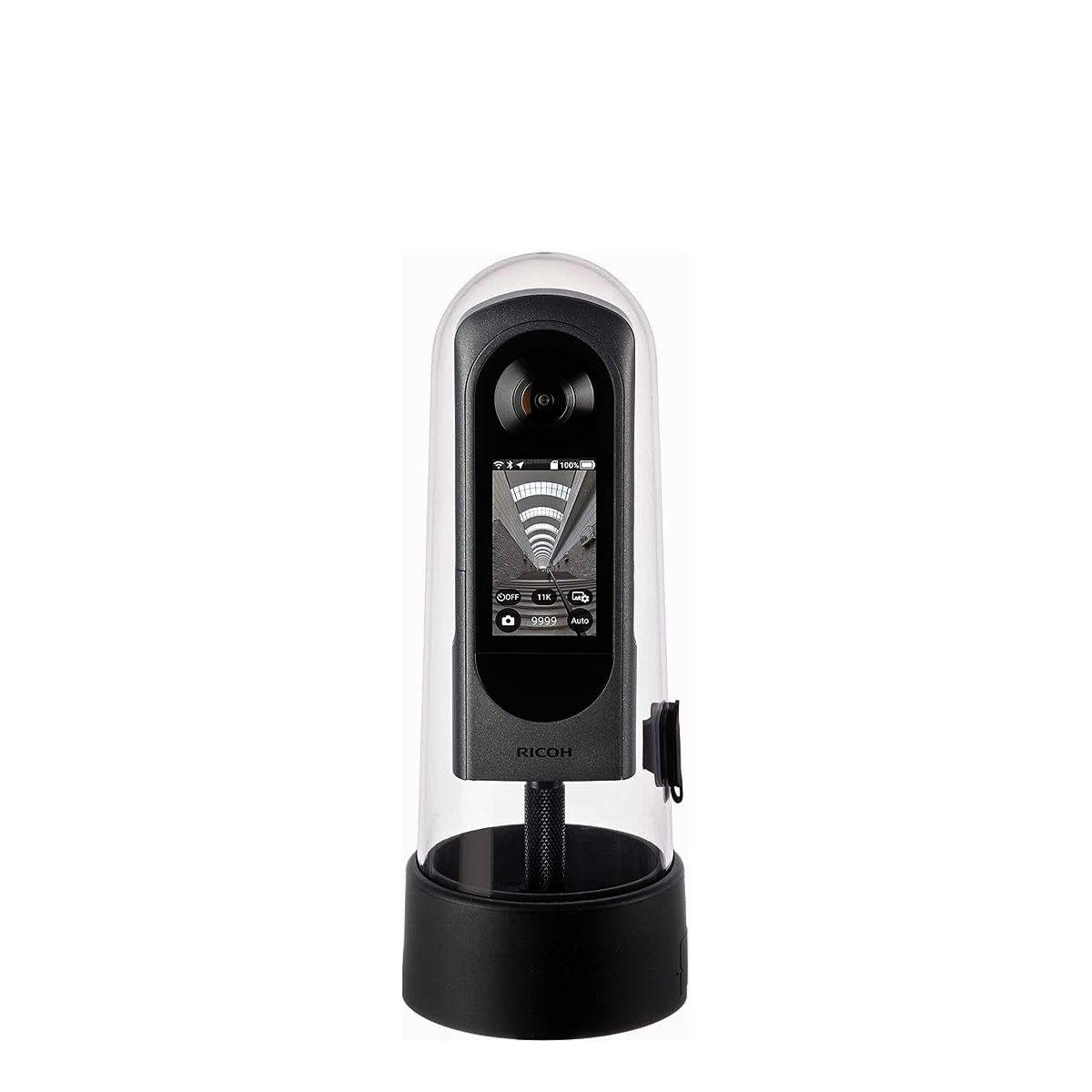
With high-res 60.5MP still images, a 1/2-inch sensor, and 5.7K 360º video, the Ricoh Theta X's specs are up there, but the auto HDR feature makes it ideal for virtual tour photos.
Read more below...
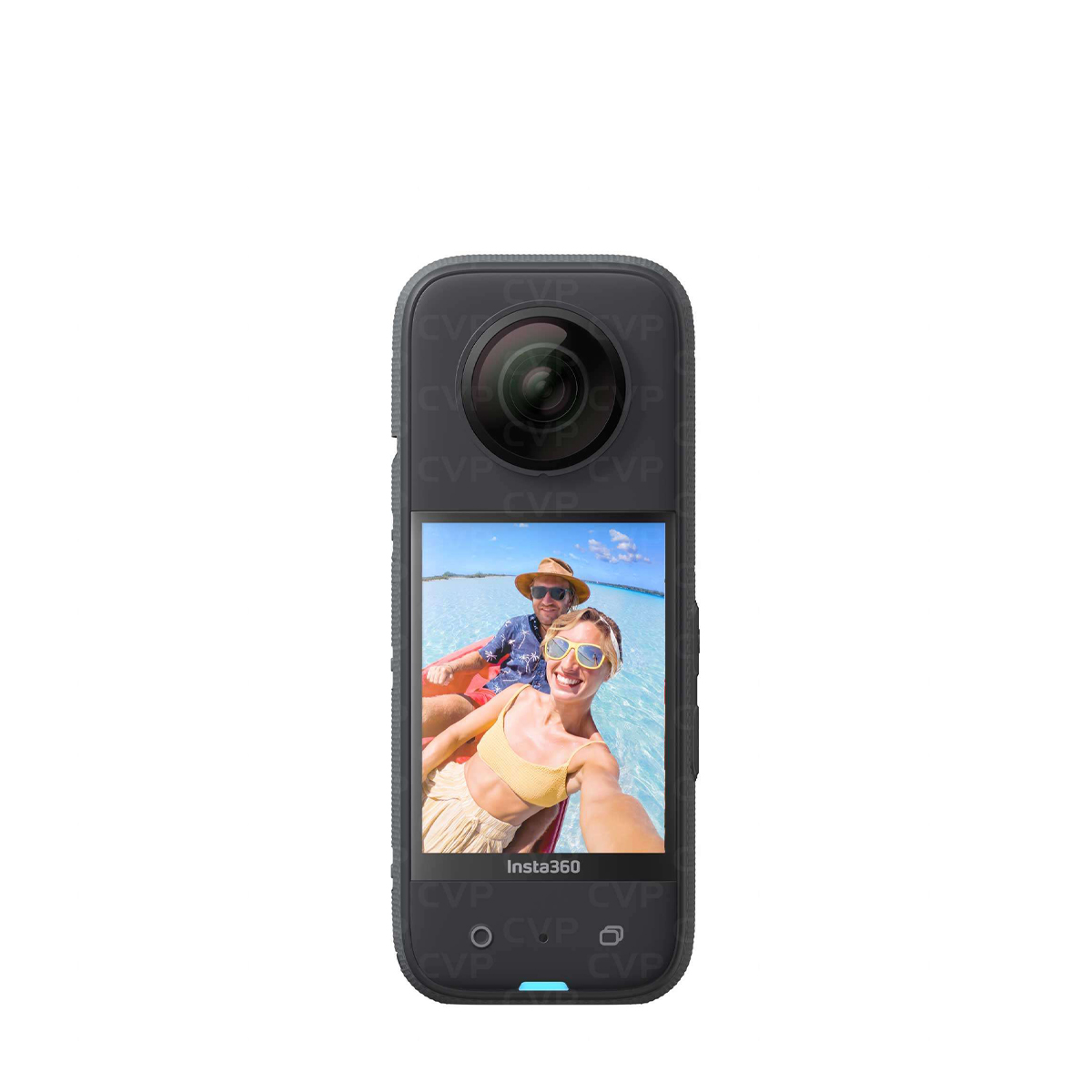
The Insta360 X3 dropped in price when my new favourite the X4 came out, but this is still a very powerful device with great features and the benefits of Insta360's class-leading apps.
Read more below...
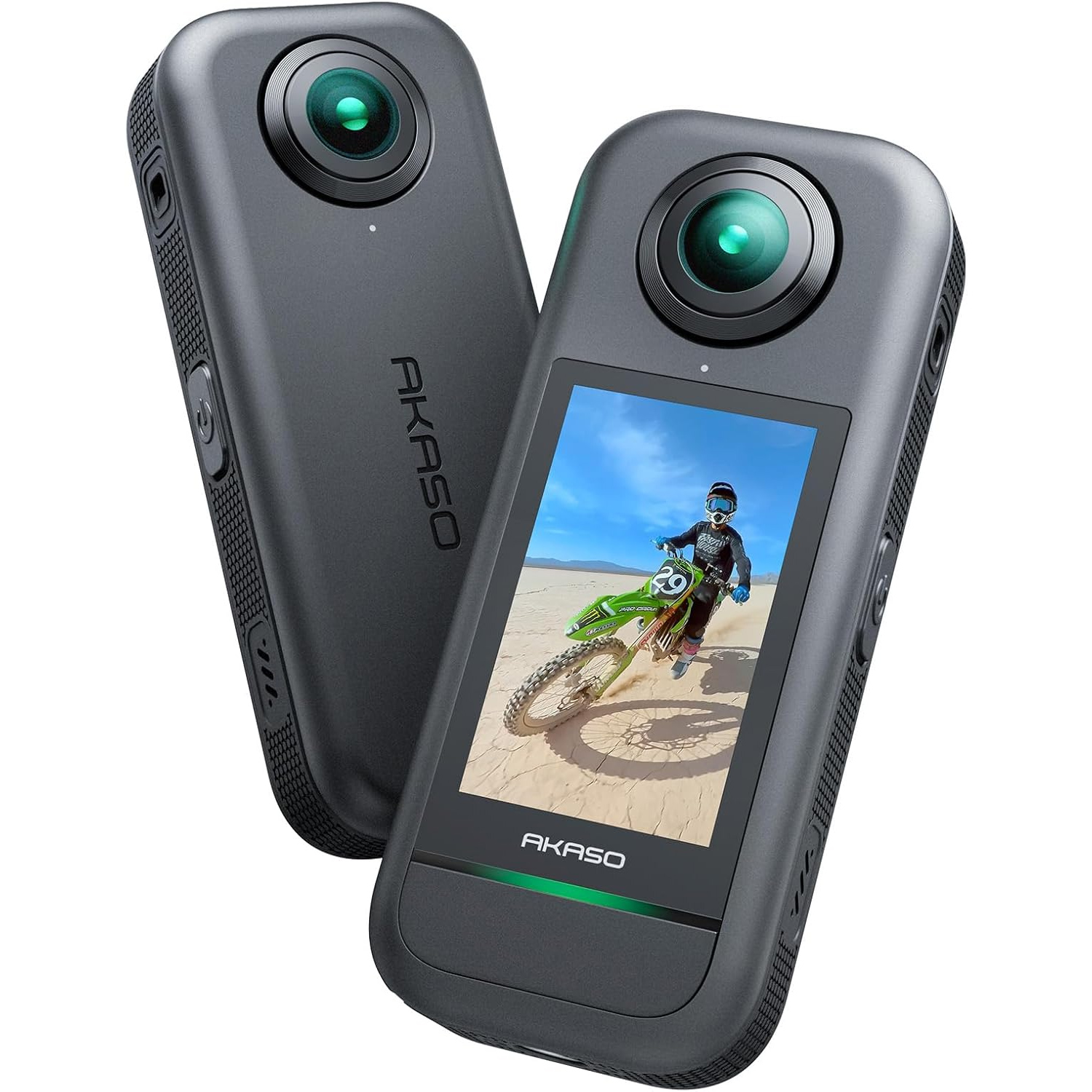
With impressive hardware specs and especially good low-light performance, this is a great choice at a relatively low cost. The software offers fewer choices, but enough possibilities for exploration.
Read more below...
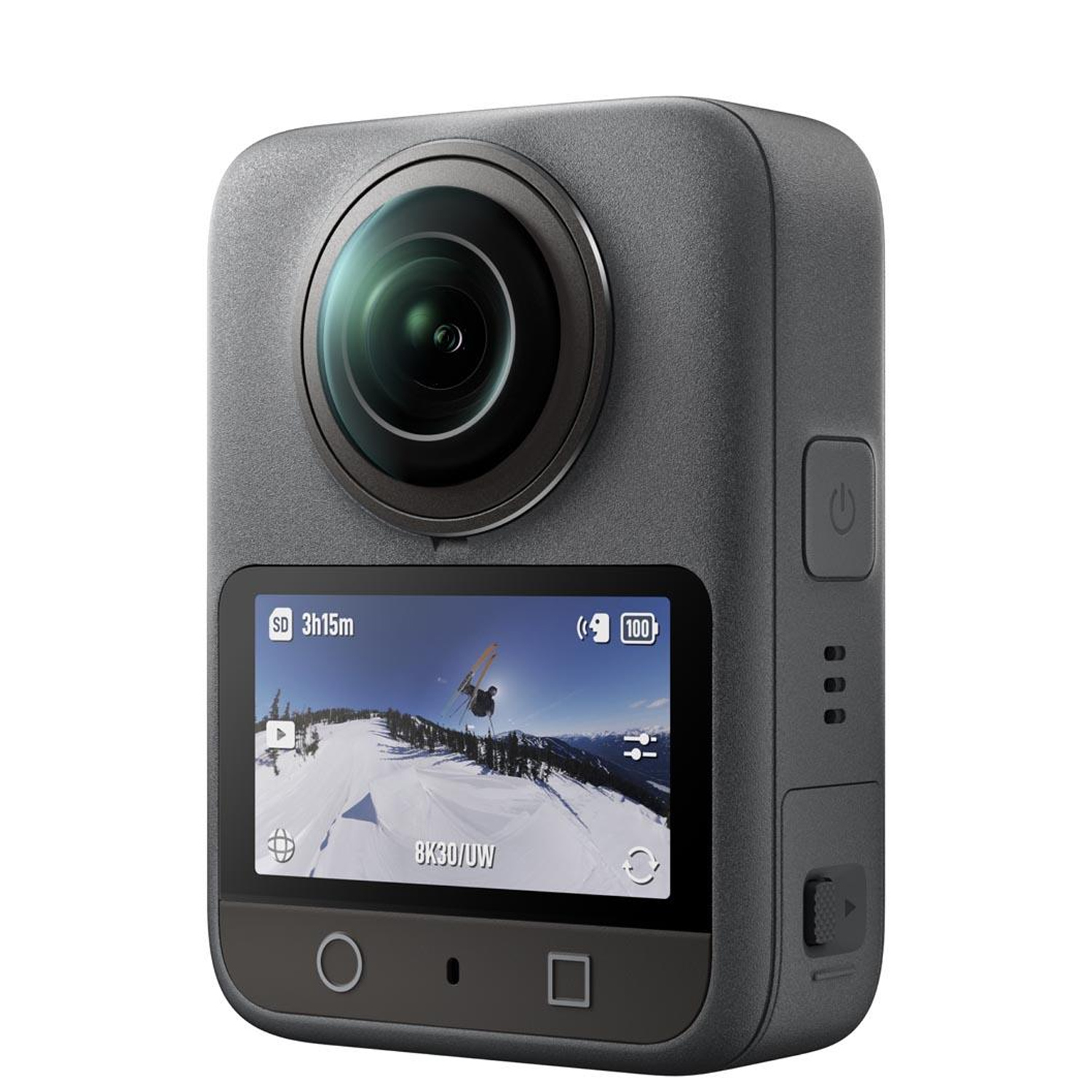
In or out of America, this is arguably the best 360 camera at all; my only hesitation was initial US supply issues but these seem to be clearing up.
Read more below...
View the full list ⤵
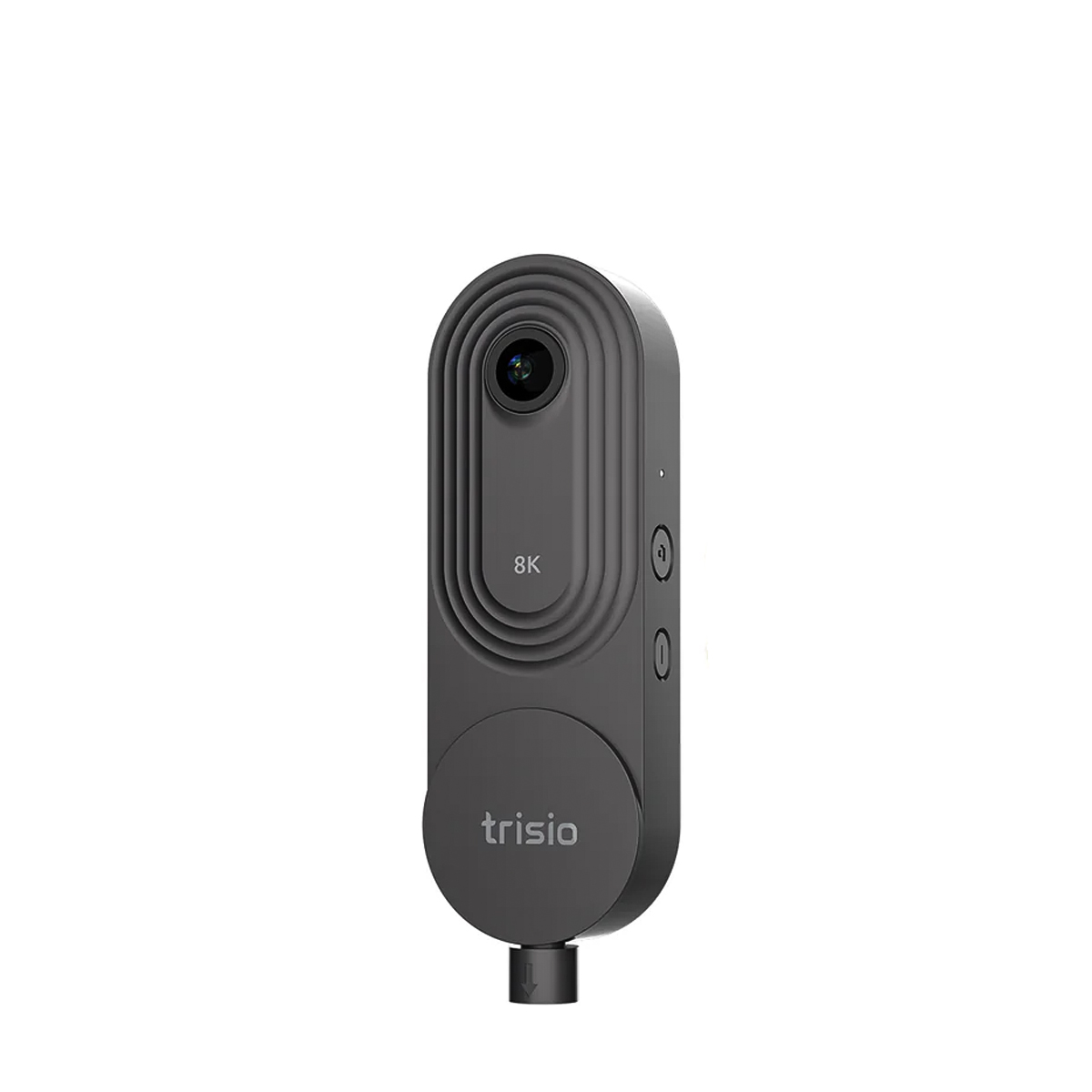
This camera is so limited that it can’t shoot regular stills or 360-degree video – but that’s the point. With a rotating mechanism and one-click operation, it’s designed for effective and foolproof capture of virtual panoramas.
Read more below...
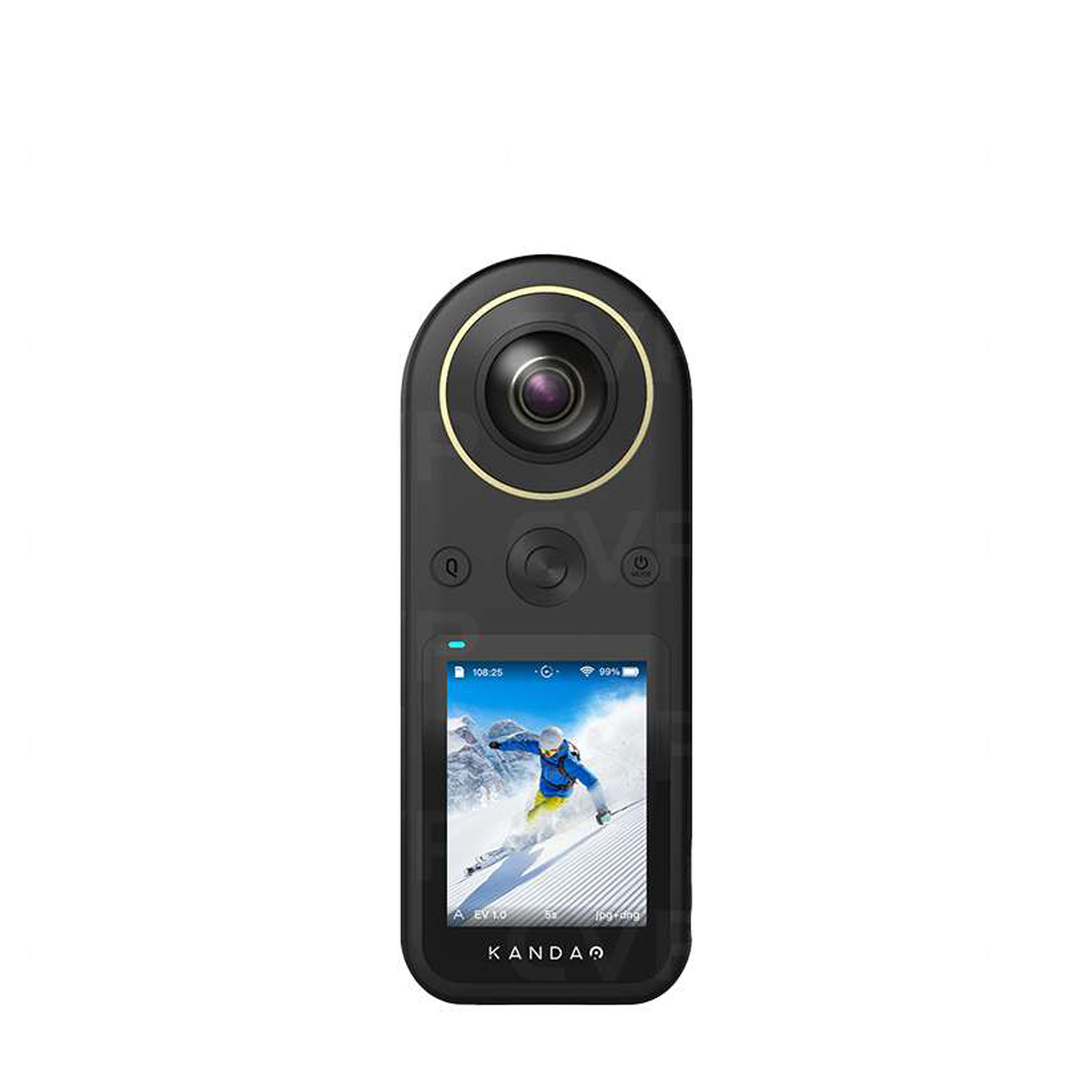
This is one of the best 360-degree cameras around for overall image quality, with a relatively large image sensor, 10-bit color and that mighty resolution. And the color and contrast you get are really something special.
Read more below...
The best 360 camera
Why you can trust Digital Camera World
Best 360 camera overall
Specifications
Reasons to buy
Reasons to avoid
✅ You want sharp 360 video: The 8K makes for much more flexibility than most alternatives.
✅ You want a great all-rounder: The camera is powerful enough to turn itself to nearly any task, including one-camera action camera modes, and works even in lower light – but it is more from processing than optics.
❌ You are on a tight budget: There are cheaper options – go back two generations to the X3 and you still get a lot of quality.
❌ You don't have a modern phone: Like all 360-degree cameras, you'll get the best out of it if you can run the app.
Just as its predecessor the Insta360 X4 was destined for the top spot on this guide (and can still be seen as something of a bargain for many), I knew as soon as I first powered it up the X5 was bound to replace it. For a 10% price bump it brings even more processing power, bigger image sensors for better low light performance, and a host of improvements that have the potential to save you tons of cash and make you feel comfortable using the camera anywhere and everywhere.
Insta360 offers excellent software, which means all their 360-degree cameras are the start of a smooth and easy journey. The X5, though, with extra processing power is even better, identifying action for auto-edits and subject tracking.
As well as an excellent phone app (iOS/Android), there is an Insta360 Studio for Mac/PC and plugins for Premiere and Final Cut Pro so creating content can happen almost immediately for social, or in careful detail later. The AI subject tracking is excellent too, saving hours in manual keyframing compared to GoPro's offering.
8K resolution is significantly better than 5.7K, but the arrival of improved frame rates for 5.7K is also impressive; there are options for creators. Since you can also just use a single lens at 4K60fps threshold, you might not need a GoPro or equivalent either, which makes the cost easier to swallow.
The camera's toughness comes not just from removable lens covers but replaceable lenses should the worst happen (though in my testing I dropped the camera three feet onto a hard surface without the lens covers with no ill effects).
See my full review of the Insta360 X5
Features | I couldn't identify a feature that wasn't available to me, and moreover the device and app feel refined in use. | ★★★★★ |
Design | Obviously back-to-back lenses are inherently vulnerable, but everything has been done to mitigate that, added to a brilliantly realised device which feels like a design icon in the making. | ★★★★★ |
Performance | Everything about the cameras seems snappy in operation, and the output is strikingly impressive – certainly visibly better in lower light than predecessors. The docked star is only because I didn't find the battery – though better – didn't quite live up to the claims in my real-world tests. | ★★★★☆ |
Value | This is still spectacular value – arguably more so than the X4 since it is better in low light and makes an even better case to be your only action camera. My only reservation is that you can get a lot of the fun (but not the ruggedness or resolution) with the X3 because Insta360's apps are good. | ★★★★☆ |
Best GoPro 360 camera
Specifications
Reasons to buy
Reasons to avoid
✅ You want 'robust': GoPro has leaned into the brand's reputation for rugged and outdoorsy with the Max 2 design
✅ GoPro Quik app is good: Since 2025 GoPro has invested in a good app ecosystem on phone
❌ Sudden jump in pricing: The Max (1) was on the shelves a lot longer than GoPro had hoped so, to stay competitive, the price was kept down. Now you'll need to dig deeper.
❌ You want the best stills resolution: At 29MP the camera is not as sharp as competitors from DJI or Insta360.
Having got the world excited about 360-degree cameras for action, GoPro took its foot off the gas and, for a long time, has not had anything to compete with the premium offerings from – especially – Insta360 and DJI. With the arrival of the Max 2 the company seems to have regained its crown, especially for the kind of scenario GoPro belongs: outdoor action in daylight.
This camera boasts the now expected 8K resolution, and the video genuinely seems to look better thanks to the so-called 'True 8K' which GoPro say gives it 21% more pixels on the sensor than other '8K' 360-degree cameras (even though the same number of pixels are used in the recorded video stream). Admittedly in low light the outcomes are less impressive, but this is an action camera at heart and exciting action is likely to happen outdoors and in the day.
The camera also boasts GPS so it can track movement for the metadata and create cool overlays in the videos, a touch I always appreciate as a cyclist. GoPro has managed to sneak in all the key methods of attaching the camera, too, and – for creators – the six-microphone system is one of the most impressive in the business, able to retrospectively home in on sounds.
The easy-to-understand two-button GoPro interface and straightforward 1.82-inch touchscreen and menus are very in keeping with the rest of the popular brand's devices, which is a blessing for many. 10-bit color as an option, and AI subject tracking after-the-fact means this is a camera you don't even need to point, but can get the qualtiy you need.
Read my full GoPro Max 2 review for more details
Features | GoPro now has a premium camera with a 10-bit recording option, though it'd be nice if there was a night mode. | ★★★★☆ |
Design | Brilliantly well built with serious consideration given to what might go wrong, it's only a shame it doesn't love very warm days. | ★★★★☆ |
Performance | In ideal conditions (daylight) this is probably the best 360-degree camera out there, and the Quik app has decent AI tracking too. | ★★★★★ |
Value | No longer the cheap name in the game, GoPro is offering a quality camera that lives up to the brand's reputation. That means, as a new product, it's not the cheapest either, but, hey, quality costs. | ★★★★☆ |
Best 360 camera for stills
Specifications
Reasons to buy
Reasons to avoid
✅ You want to shoot for virtual tours: The auto HDR and built-in GPS features are ideal for this
✅ You want good low-light performance: Again by automating the shooting of HDR images, good resolution is achieved in low light
❌ You want to shoot action: Frankly the insta360 X4 is better and cheaper.
❌ You're looking to keep costs down: The price is definitely high based on the spec sheet alone.
I've got to be clear straight away: this is very much a niche choice – but 360-degree photography serves niches, and virtual tour content is an important one.
Whether the Ricoh Theta X is going to appeal to you will depend on what kind of content creator you are. If you're looking at this 360° camera as an alternative to an action camera like the Insta360 X series, then bear in mind that its image stabilization just isn’t as good. Vloggers should also look at the Theta X with suspicion purely because you can’t use an external microphone with it.
So who is the Theta X actually for? It's for people who need to shoot a virtual tours fast. It can be placed on a monopod with tripod feet in its automated HDR mode and capture a 62 megapixel image which can be placed into a tool like Matterport to create a virtual tour – handy for realtors.
This is a feature that put it along way ahead of the competition when it launched, but to be fair its pricing and limited powers in the broader feature scope do put it at a bit of a disadvantage; for many virtual tours it is possible to use the technically slightly higher resolution images from an Insta360 X3 or X4.
When combined with its excellent coloring and low-light abilities, though, the Theta X’s abilities do look good even in average looking apartments. Its lack of RAW capture slightly undermines that option for some, but the realtor on the go may feel this is a wise choice.
Read our full Ricoh Theta X review for more details
Features | The automated HDR stood out at launch, but now this camera faces stiff competition from generalists. The lack of a smartphone download feature feels historic. | ★★☆☆☆ |
Design | Styling and plastic edging might not be rugged, but there is a certain chic | ★★★☆☆ |
Performance | It is dated, and lacks RAW functionality, and – while it can shoot video – the stabilization isn't up to modern standards. | ★★★☆☆ |
Value | Unless you've got a specific purpose in mind, this feels like dubious value compared to more feature-rich alternatives | ★★☆☆☆ |
Best 360 camera for beginners
Specifications
Reasons to buy
Reasons to avoid
✅ You want a good all-rounder: The Insta360 X3 still has great software and good features despite a few extra months!
✅ You want to save a bit of cash: This might not be the cheapest option here, but it's great value because of the apps and quality.
❌ You want the latest and greatest: The newer X4 has 8K resolution and an improved battery.
❌ You want the most rugged option: If you need lens guards for the X3, they need to be stuck on.
The Insta360 X3 was the ultimate immersive and versatile video camera until the X4 came out, trumping the X3's 5.7K capture with 8K. Nevertheless the camera still captures everything around you, enabling you to create 3D VR content easily or use its software-based reframing tools to edit your scenes as regular ‘flat’ video, where you can track subjects, create panning shots, and basically point the camera where you like AFTER you’ve shot your video, albeit at slightly lower resolution.
For most quick action shots, and things you throw onto social, you will likely find the extra resolution isn't essential, while the lower price of this now older model is appealing – and it's still newer and more powerful than the GoPro Max!
The Insta360 X3 itself was an evolution of the concept (yep, it was called the X2) rather than a giant leap forward, so it already has some improvements that makes it user friendly. It can be held in one hand, though I usually prefer to user it on a selfie stick – which becomes an 'invisible selfie stick'. thanks to the device. All the key features are available via the touchscreen, and the device is waterproof for a few meters even without a housing.
At the moment, Insta360 seems to be leading the game, and that is evidenced by their software – just about the best, friendliest, and most exciting on the market, and the software tools on phone, Mac & PC (as well as plugins for the likes of FCPX and Premier Pro) have come a long way.
I tried the X3 on a real vacation successfully, and another benefit of this camera's dominance is the range of accessories, including dive cases and more.
Read our full Insta360 X3 review
Features | Drop the resolution from the newer X4, but it still boasts a lot of action camera features including HDR. | ★★★★☆ |
Design | Decent usable screen for control; the biggest problem is the lack of detachable lens protectors so you have to be cautious in rough environs. | ★★★★☆ |
Performance | Can take a few moments to come to life, and definitely prefers good light for video. Isnta360's software is amazingly flexible. | ★★★★☆ |
Value | With a hefty price advantage over its newer sibling, this is a fine choice if you need to save some cash. | ★★★★☆ |
Budget 360 camera
Specifications
Reasons to buy
Reasons to avoid
✅ You want to try 360-degree photography: With a low cost of entry, this is a good way to find out if you like the idea of 360-degree photography.
✅ You want it simple: The app is OK too, so transferring files is straightforward.
❌ You want the best quality: No match for Insta360 or DJI's Osmo 360.
❌ You want a long battery life: Battery life doesn't compete with the leading products either.
Not everyone knows for sure they want to get involved in 360-degree photography, and it's not something you can try out without a dedicated device – no app can change the shape of your phone to give you a try!
This camera, with an asking price less than half that of the market leaders, might not be the best in terms of quality, but it's not a million miles off in terms of the overall experience and it does have editing apps for the phone and computer – a crucial part of the modern experience.
So, if you want to give 360-degree photography a chance, but you aren't entirely sure whether you need the best tech, this is a great place to start.
It's also worth remembering that 360-degree is often used for very short animated moments that form bumpers between other video clips – these can be made with keyframed video (with the tools here), and high resolution isn't absoloutely essential – this kind of resolution has been used on broadcast television for this kind of job, so for social – especially if you're only capturing your material in good light – this might be all you ever need.
Check our full review of the Akaso 360 for sample videos
Features | Good number of different recording modes and mobile and desktop editing options add up to a smooth experience. Makes 360-imaging easy and fun! | ★★★★☆ |
Design | Copies Insta360’s styling (looks a lot like a economy version of the X3 in fact) but why not? That was (and is) a great choice. Screen could be brighter and more responsive. | ★★★½☆ |
Performance | Image and video quality are firmly on the level of ‘good enough’ – only struggling in low or contrasty light. | ★★★½☆ |
Value | Savagely undercuts DJI, Insta360, and GoPro on price, with bundles being the real potential (a selfie stick is crucial to 360). | ★★★★☆ |
Best 360 camera for sensor size
Specifications
Reasons to buy
Reasons to avoid
✅ You want good low-light: The large, square image sensors offer impressive low-light abilities AND conserve more power than other designs.
✅ You use the DJI ecosystem: Pairs with DJI microphones seamlessly and easily.
❌ You want to keep the cost down: While the camera is a surprisingly good value, the initial bundle make getting the selfie stick oddly costly
❌ You are concerned by US import issues: Hopefully a temporary issue, but shipping into the USA was delayed at launch.
DJI has achieved so much with this camera that, were it not for the fact that global shipping has been a bit of an issue in its early days, it would likely be top of this list now. I was genuinely taken aback when I reviewed this 360-degree camera, and I've been using these things a while now.
It is unarguably the winner on tech specs against the camera it clearly launched to take on – the Insta360 X5 – as well as the GoPro that still hasn't arrived (the Max 2 we keep hearing about!) The battery performance and the low-light capability of this put it ahead of the others, and there are no obvious compromises made to achieve these goals.
In fact, if anything, this new camera is the opposite. It has other extra features and specs, like the 5K single-camera modes and longer operation without overheating. There are so many features that just make it feel like a natural choice as an action cam. It's pretty rugged (though the lenses can only be shielded, not replaced, so do plan ahead a bit!
DJI users will absolutely love the fact that it has built-in support for DJI mics and takes the same 1350mAh batteries as the DJI Action 5 Pro camera, and that the phone remote control is via the established Mimo app – part of the reason this all feels a bit more evolved than you might expect for a 'first' 360-degree cmaera.
The new software is also, while perhaps not quite all the way as polished as Insta360's, surprisingly close, with a computer and a phone app and the ability to take advantage of the depth of the 10-bit video in phone editing.
Read our hands-on DJI Osmo 360 review for more details and samples
Features | With not just 8K but high frame rate 10-bit video, support for DJI's mics and a host of clever features, DJI have hit the ground running in terms of features. | ★★★★☆ |
Design | Perhaps not the most beautiful device, but reassuringly rugged and easy to re-purpose between 360-degree and one way – excellent practical design (and even shared DJI batteries with the Action camera). | ★★★★☆ |
Performance | Not only doing well on the headline stats, the quality in low light and the 10-bit video make this quality in depth. Battery performance is great too. | ★★★★★ |
Value | Compared to the most obvious competitor, this is excellent value (if only the selfie stick were a bit cheaper). | ★★★★☆ |
Best single-lens 360 camera
Specifications
Reasons to buy
Reasons to avoid
✅ You want to shoot stills: This is all about shooting detailed images, perhaps for virtual tours
✅ You need to avoid stitching marks: By rotating the camera, there aren't two images to stitch
❌ You want video: The technology prevents it
❌ You want to shoot fast: You need to wait while the motor turns the camera
Designed for businesses that have a need to produce a lot of static virtual tours, the Trisio Lite2 is a very simple device that’s incredibly easy to use. Its 360º photos are excellent and easily good enough for use on virtual tours and for showing off event spaces and hotel rooms online.
The 8K boast is less impressive than its ability with HDR, which helps create vibrant and dynamic spherical images that excel in high contrast environments, but also in low light.
It’s no 360º action camera, with VR-style video off the table. Patience is required, too, since it takes the Trisio Lite2 30 seconds just to light-meter and take a single 360º photo. However, used slowly and carefully the Trisio Lite2 is one of the most limited, and yet the most capable, 360º cameras around that does one thing very well indeed.
The camera got a big boost when a PC & Mac app finally came along after launch, so USB – not just phone – transfer was possible.
Read our full Trisio Lite2 review for more details
Features | Not many stars here because there aren't meant to be – this is a one-job device. | ★★☆☆☆ |
Design | A little meh, to be honest, but a simple one-touch approach means you can entrust it to realtors. | ★★★☆☆ |
Performance | After a software update to 1.2, it takes surprisngly good smooth-stitched images without excessive saturation. | ★★★★☆ |
Value | To my mind, even with the improved app capable of batch processing, it's still had to justify compared to the prices of generalist 360-degree cameras like the X3. | ★★★☆☆ |
Best 360 camera for 8K video
Specifications
Reasons to buy
Reasons to avoid
✅ You want quality: Though there is now a new consumer 8K cam from KanDao, this broadcast tool is actually a value proposition against very high-end gear.
✅ You want to live broadcast: With a built-in ethernet socket, you can stream with no interruption.
❌ You want an 8K camera as a consumer: To be honest, Kandao – not to mention Insta360 – have cheaper options!
❌ Battery life is important to you: Frankly, it's not great.
The QooCam 8K Enterprise is very much a niche product; Kando themselves now offer a more 8K-friendly consumer product (which effectively replaces the QuoCam 8K for most). This, however, is listed in their professional section and remains one of the best 360 cameras right now for image quality because it has a massive (by 360 standards) 1/1.7-inch CMOS sensor, 10-bit color, and, of course, the 8K resolution.
It's expensive, but it isn't the 5 figure sum that some of the pro 12-megapixel gear is, so if you're looking for photos that have plenty of colors and contrast (like nothing we’ve seen before from a camera like this when the camera was launched) and are prepared to put up with the less-than-slick software that Kandao offer, this is a good choice.
The ability to spit out a great-looking photo from a 360º video is welcome, while the detail, sharpness, and smoothness of video – whether in 360º or cut down to widescreen – itself makes the QooCam 8K a giant leap forward for creative filmmakers.
We did list some negative points in our review, most notably that it does have an audible fan, however, the battery life isn't great and it's not waterproof without a housing. It was also pretty expensive, and we'd suggest that this probably isn't the right device to buy if you can wait until the QooCam 3 Ultra (see QooCam 3) starts shipping.
Read our full Kandao QooCam 8K 360 camera review (non-Enterprise version) for more details
Features | When launched, the highest resolution was THE feature, though 10-bit color didn't hurt. | ★★★★☆ |
Design | Nice big screen, though somehow the styling more or uess entirely fails to please the eye. That's hardly an issue with broadcast geatr though! | ★★★☆☆ |
Performance | Decent app with SmartClip tools / 'ExpressEdit' – don't expect to run off the battery long. | ★★★★☆ |
Value | Value has taken a kicking thanks to the Insta360 X4 for most users, but for pros the Ethernet port is what you're paying for and the usability is something you'll work around! | ★★★☆☆ |
Alternative budget 360 camera
Specifications
Reasons to buy
Reasons to avoid
✅ You want to try 360-degree photography: With a low cost of entry the QooCam is a great way to experience 360-degree video.
✅ You want decent low-light performance: The wide aperture sensors don't do a bad job at all.
❌ You want to transfer beyond your phone: No Mac/PC apps were on offer when I tested it.
❌ You want a long battery life: I found the battery didn't manage half an hour.
This simplistic-looking 360-degree camera is very appealing because of its price. The dual 1/1.55-inch sensors and ƒ/1.6 apertures collects a good amount of light and not only captures good-looking 5.7K video but up to 62-megapixel stills, putting it close to the Insta360 X3 or the GoPro Max it seems to draw some appearance cues from.
It looks and feels good, and can be held on a selfie stick for vlogging or capturing immersive panoramas. Hardware quality extends inside too – I have found no issues like early overheating, though admittedly the battery life is surprisingly short, at about 30 minutes.
Compared to the leading brands, though we've not had time to be sure whether Kandao's new software suite quite matches up to the others. There certainly isn't the same level of support – no Mac/PC app – but the phone app connects to the device and allows transfer to social in a way which means you can have fun experiencing 360-degree.
Kandao is clearly on a good trajectory (and it doesn't hurt that company produces high-end pro 360-degree cameras and owns a good chunk of the 360-degree conference room camera market too). Pricing, though, is where this camera really shines.
That's also interesting because the camera has an 8K sibling, now available, called the QooCam 3 Ultra – which is similar looking, but taller. This suggests a decent level of confidence in the series from Kandao, which feels well-earned based on this. The Ultra is in the honourable mentions here because (at launch anyway) the value is open to doubt, but do check it out.
Check my review of the QooCam 3 for sample videos
Features | While you're "restricted" to 5.7K, that is fine; you will be more dependant on platforms like YouTube's ability to display 360-degree video though as, aside from the phone app, there isn't a lot from Kandao. | ★★★☆☆ |
Design | The camera housing feels high quality, and the aesthetics work well. | ★★★★☆ |
Performance | There is a slight sluggishness to the system, but if you keep your phone with you you'll have no problems. | ★★★☆☆ |
Value | The lower cost of entry makes this a very appealing choice, though it is now in some contention with the price-reduced Insta360 X3 which can bring better software to the table. | ★★★★★ |
Honourable Mentions
The Antigravity A1 – the world's first 360-degree camera drone – is now out (and a little earlier than expected). I've already done a full review of the A1 and I can say that the drone – which shares some camera tech with the Insta360 X5 – is revolutionary. A genuinely different experience because you, as a pilot, can look around in any direction, just by turning your head (and not see the drone or props). It's a premium price because the tech requires goggles too, but it is very easy to operate and makes a lot of new drone shots possible – not to mention fun!
The Kandao QooCam 3 Ultra is the 8K version of the Kandao QooCam 3 (on this list). At its launch price (which, we suspect, might come down a bit) it doesn't offer excellent value in comparison to the Insta360 X4, but it still has some nice touches, including 96-megapixel stills, and is will worth checking out.
The Insta360 X4 has now been replaced by the better Insta360 X5, but until the release of the X5 in April 2025 the X4 held the top spot on this guide – it boasts most of the key benefits, except that the low-light performance is a bit more average. On the plus side, it can often be found for a bit less cash, so do consider it!
FAQs
How does 360 imaging work?
When visualizing how 360-degree images are captured, imagine someone photographing a sphere from the inside, making sure they get every contour of its inner surface. That’s essentially what 360-degree cameras do – place you in the centre of a sphere, and use extremely wide-angle lenses to capture everything around that point.
The sensors are ordinary ‘flat’ types, but the key is in the lenses, which are extreme fisheyes capable of capturing a 180-degree view, placed back to back. This captures two hemispherical images, which are then merged to produce the final 360-degree image. A viewer can then explore this image with a mouse, touchpad, touchscreen, or VR headset, depending on how they’re viewing the image.
Taking 360-degree videos is, naturally, more complex than stills, as the action all around the viewer will continue even if they’re not looking at the portion of the image where it’s happening. As streaming platforms get more sophisticated, live 360-degree broadcasts are also becoming more common, which is an unparalleled way to immerse yourself in an unfolding event (short of, y’know, actually being there).
Editing 360-degree imagery can be a daunting task, though it is possible to divide them up into smaller ‘windows’ to handle individually, giving yourself a bit more control. In stills, you can crop out one of these windows entirely and export it as a ‘flat’ image. In the video, this flexibility allows you to essentially simulate camera movements like tracking, panning, and zooming, even though your shot was captured from a fixed position. Handy!
There is one thing to be aware of when dealing with 360-degree imagery, which specifically is resolution. As the surface area of a 360 image is much larger than a conventional one, 12MP on a 360-degree camera means something pretty different than 12MP does on a DSLR, and you can’t crop in as close expecting the same level of detail.
Can I view 360-degree content on an Apple Vision Pro
Yes, the Apple Vision Pro is getting a special upgrade to visionOS 26 for content in which you can turn your head to look around, including not just 360-degree stuff, but others including 180-degree and even just wide-angle video. Insta360, GoPro, and Canon have cooperated with Apple on this tech, and the Insta360 X5 and GoPro Max cameras are specifically mentioned in Apple's materials. This was first announced at WWDC25)
How we test cameras
We test cameras both in real-world shooting scenarios and in carefully controlled lab conditions. Our lab tests measure resolution, dynamic range, and signal-to-noise ratio.
Resolution is measured using ISO resolution charts and quoted in line widths/picture height, which is independent of sensor size. Dynamic range is measured using DxO Analyzer test equipment and the results are expressed as EV values. DxO Analyzer is also used for noise analysis across the camera's ISO range, with results quoted as a signal-to-noise ratio. We typically choose three competing cameras to offer a performance comparison and some context.
More importantly, we get out there in the world and shoot some 360-degree video. This gives us the opportunity to experience the stitching – do the lenses line up and create a spherical view, or are there lens problems? Is it easy to manipulate the preview?
It is also the only way to experience a type of cameras which depend, as 360-degree photography does, so heavily on software to offer the best feature set. Effects which might seem a novelty can actually be the basis of great social video (not to mention the beginning of a whole world of goggles-friendly AR content.
We also test significant accessories – for example 360-degree cameras require special cases for underwater photography, so I did a full real-world review on the Insta360 X3 Invisible Dive Case.
Today's prices compared
The best camera deals, reviews, product advice, and unmissable photography news, direct to your inbox!

With over 20 years of expertise as a tech journalist, Adam brings a wealth of knowledge across a vast number of product categories, including timelapse cameras, home security cameras, NVR cameras, photography books, webcams, 3D printers and 3D scanners, borescopes, radar detectors… and, above all, drones.
Adam is our resident expert on all aspects of camera drones and drone photography, from buying guides on the best choices for aerial photographers of all ability levels to the latest rules and regulations on piloting drones.
He is the author of a number of books including The Complete Guide to Drones, The Smart Smart Home Handbook, 101 Tips for DSLR Video and The Drone Pilot's Handbook.
